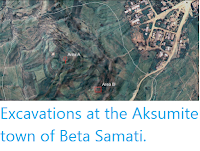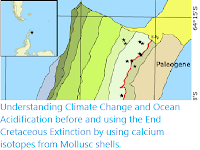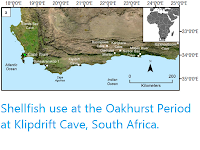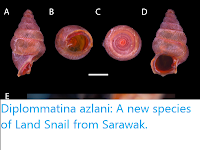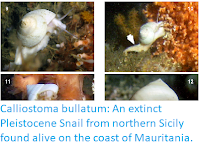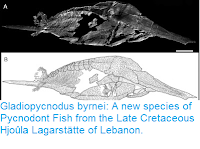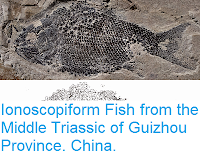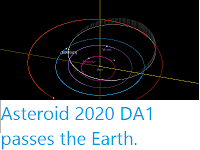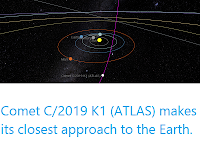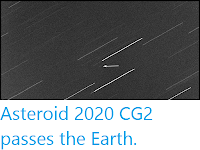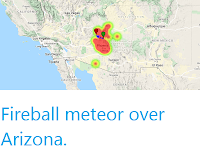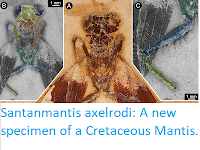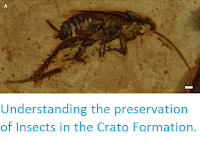Hyper-enriched Black Shales, or polymetallic shales, are an important global resource for Zinc, Nickel, Copper, Molybdenum, Selenium, Uranium, Vanadium, Chromium, Cobalt, Silver, Gold, Platinum Group Elements, and Rare Earth Elements. These deposits are thin (genrally under 10 cm) and laterally extensive. The Nick Prospect, one of at least four Hyper-enriched Black Shale localities in Yukon, Canada, is the best-known Hyper-enriched Black Shale in Canada and contains an average of 5.3% Nickel by weight, 0.72% Zinc by weight, 2400 parts per million Molybdenum, 670 parts per million Platinum Group Elementss, 90 parts per billion Au, and 24.5 parts per million Rhenium. The Hyper-enriched Black Shale is conspicuously situated at a regional stratigraphic contact between the Road River Group and the Canol Formation. Recent work has shown that the ambient paleoenvironment in which Hyper-enriched Black Shale formed was redox stratified and that pyrite is the mineralogical host of economically important metals; however, the age of mineralization with respect to host rock deposition is not known. Precise age constraints are required for mineralisation to test the favored model that elemental enrichments in Hyper-enriched Black Shales originate from ambient seawater. and they also can provide a clearer understanding of the broader environmental parameters that may have facilitated mineralisation.
Map of Middle Devonian paleogeographic elements (light blue represents carbonate platforms; dark blue, basins) on the Laurentian continental margin with Hyper-enriched Black Shale localities from the current study (red stars) and other Hyper-enriched Black Shale localities (red circles). NWT, Northwest Territories. Gadd et al. (2020).
Rhenium is one of the rarest elements on Earth and the second highest stable element on the periodic table, after Hafnium. There are two naturally occuring isotopes of Rhenium, the stable Rhenium¹⁸⁵, and the 'unstable' Rhenium¹⁸⁷. Unusually, the 'unstable' form of Rhenium is the more common; this is because it has an extremely long half-life, about 4160 million years, which means that a significant proportion of the Rhenium¹⁸⁷ present during the formation of the Earth is still in that form (like all elements heavier than Iron, Rhenium is formed during supernova events at the end of the life-cycle of massive stars). When Rhenium¹⁸⁷ does decay it does so into the stable radiogenic isotope Osmium¹⁸⁷. Osmium also has two stable isotopes, the non-radiogenic Osmium¹⁸⁸, and the radiogenic Osmium¹⁸⁷. This means that over time ths amount of Rhenium¹⁸⁷ in a rock sample will fall at a predictable rate, while the amount of Osmium¹⁸⁷ rises at the same rate, and the amount of Osmium¹⁸⁸ remains constant, making it possible to date the rock by comparing the ratios of these elements.
An early Rhenium-Osmium geochronologic study on Hyper-enriched Black Shale mineralisation at the Nick Prospect determined a Devonian age for the Hyper-enriched Black Shale, which only broadly agreed with established stratigraphic relationships. Since then, sulphide Rhenium-Osmium geochronology has been refined and is suited for dating Hyper-enriched Black Shale mineralisation and other sediment-hosted base-metal sulphide deposits.
Gadd et al. combined data from the Rhenium-Osmium geochronology with Conodont biostratigraphic ages that further develop the chronological framework in the context of global episodic changes in the Devonian marine environment. The combined age data allowed Gadd et al. to assess the possible role of global-scale eustatic and biotic events that punctuated the Devonian, and may have been climacteric in forming Hyper-enriched Black Shale mineralisation along the western Laurentian continental margin.
The northern Yukon Hyper-enriched Black Shale showings are located within Paleozoic basinal strata of the Richardson Trough. This tectonic depression has been interpreted as a failed rift. It is bounded to the east by the Mackenzie Platform and to the west by the Yukon Stable Block; the latter a stable, offshore shelf during the pre-Carboniferous Paleozoic. Sedimentary strata within the Richardson Trough are characterized by over 1000 m of fine-grained, carbonaceous siliciclastic rocks of the Upper Cambrian to Middle Devonian Road River Group. The Canol Formation overlies the Road River Group and consists of as much as 220 m of Middle Devonian to lower Upper Devonian cherty, carbonaceous shale. It is at this contact that a thin (1–10 cm thick) Hyper-enriched Black Shale layer is documented in several localities throughout northern Yukon. These Hyper-enriched Black Shale layers consist of about 60% by volume sulphides and 40% by volume non-sulphides.and sulphides are interbedded with black, siliceous shales. Samples typically contain a number of sedimentary features that include laminar bedding disrupted by softsediment deformation. The upper and lower contacts with the enclosing host rocks are typically sharp, but minor slumping into the underlying siliceous shales may be locally present. There is minor to abundant biogenic debris, which includes Conodont elements and pyrite-permineralized plant matter and a relatively low abundance of terrigenous clastic detritus.

Hand‐sample specimen from Peel River (17‐ POA‐049C) showing semi‐massive sulphides. Gadd et al. (2020).
The stratigraphic sections for the Peel River Showing and the Nick Prospect are similar lithologically, with local variations in the thicknesses of units. The lithologies comprise (1) black shale with 0.5–1.5-mdiameter calcareous concretions; (2) siliceous black shale with minor calcareous intercalations; (3) a 1–10-cm-thick stratiform semi-massive Nickel-Zinc-Iron-sulphide Hyper-enriched Black Shale layer; and (4) siliceous to cherty black shale that is in sharp contact with the underlying Hyper-enriched Black Shale mineralisation. The significant difference between the stratigraphic sections of the two locations is that three distinct Hyper-enriched Black Shale layers have been documented at Peel River, whereas only one is identified at Nick Prospect Gadd et al's study focuses on the Hyper-enriched Black Shale layer that is common to both localities (i.e. at the regional stratigraphic contact).

Devonian stratigraphic sections of the Richardson trough, northern Yukon, Canada, using the Devonian time scale (A). Note the position of hyper-enriched black shale (red lines) at the regional contact between the Road River Group and Canol Formation at Peel River showing (B) and Nick Prospect (C). Black stars denote locations of Conodonts for which biostratigraphic information is available. PGE, Platinum Group Element. Gadd et al. (2020).
The contact between the Road River Group and the overlying Canol Formation is conformable. The terminal Road River Group (i.e. the Hyper-enriched Black Shale) is a regionally extensive condensed section. Condensed sections form in response to shoreline transgressions that form during late transgressive to early highstand systems tracts. They are clastic sediment-starved, such that thin (centimeter-scale) beds represent relatively long durations. Several criteria are used to identify condensed sections, and relevant ones present within the Hyper-enriched Black Shale are high abundances of authigenic minerals (such as sedimentary sulphides), abundant biogenic debris, high abundances of metals, and widespread geographic distribution. Moreover, Hyper-enriched Black Shales are starved of clastic sediments, especially in comparison to the immediately underlying Road River Group.
Hand‐sample specimen from Nick Prospect (18‐POA‐077) showing semi‐massive sulfides. Gadd et al. (2020).
Pyrite is the most abundant sulfide in the Yukon Hyper-enriched Black Shale, and there are several textural varieties, including framboidal, microcrystalline, and nodular A key mineralogical difference
between the localities is that at Nick Prospect, the predominant Nickel sulfide is vaesite (NiS₂), whereas millerite (NiS) predominates at Peel River. Another difference is that vaesite and pyrite host Platinum Group Elements and Rhenium at Nick Prospect, but pyrite is the primary host for these elements at Peel River. The sulphide paragenetic sequence is broadly the same at both places, wherein framboidal pyrite is the earliest sulphide. The large range in framboid diameters (0.003–0.1 mm) suggests that precipitation was initiated within reducing pore waters rather than in the water column. Subsequent pyrite growth overprints framboids or consists of aggregated microcrystals within nodules. Significant Nickel-sulphide postdates pyrite, as evidenced by Nickel-sulphides encrusting or replacing pyrite.

Photomicrograph showing complex, intergrown relationships among sulfide minerals in a siliceous shale matrix from Peel River. Gadd et al. (2020).
Samples of the Hyper-enriched Black Shale mineralization were collected from the regional stratigraphic contact at both Peel River (65.893°N, 135.931°W) and Nick (64.728°N, 135.235°W) and were processed at the University of Alberta. Mineral separates (9) from Peel River sample 17-POA-049c have Rheniu, and Osmium abundances of 30.1–44.2 parts per million and 179–325 parts per billion, respectively. Mineral separates (6) from the Nick Prospect sample 18-POA-077 have Rhenium and Osmium abundances of 8.8–42.2 parts per million and 46.3–311 parts per billion, respectively. The host shale at Peel River contains 1.12 parts per million Rhenium and 5.82 parts per billion Osmium, whereas the host shale at Nick Prospect contains 1.42 parts per million Rhenium and 8.87 parts per billion Osmium.
Photomicrograph of pyrite‐vaesite mineralisation in a specimen from Nick Prospect wherein pyrite is overgrown and replaced by vaesite. Gadd et al. (2020).
Isochron ages were calculated using IsoplotR software with the Model 3 regression, which accounts for potential variability in initial Osmium¹⁸⁷/Osmium ¹⁸⁸ ratios. Sulphide mineralisation from the Peel River sample yields an isochron age of 387.5 million years, plus or minus 4.4 million years, which overlaps within error with the isochron age of sulphide mineralization from the Nick Prospect (390.7 million years, give or take 5.1 million years). Unmineralised host shale isochrons coincide with the sulphide isochrons at Peel River and Nick Prospect. Including the latter data modifies the isochron ages to 386.6 give or take 3.1 million years and and 390.6 plus or minus 4.8 million years for Peel River and Nick Prospect, respectively.
Isochron ages for the Peel River and Nick Prospect localities, which are about 130 km apart, reveal that mineralization is coeval within a reasonable margin of error. Ages of Conodonts extracted from shales 0.9 m above and 1.1 m below the Hyper-enriched Black Shale at Peel River indicate that the age of sedimentation is within the Polygnathus eiflius (388.6–388.2 million year old) to the Polygnathus ansatus (386.3–385.4 million year old) biostratigraphic zones. These ages bracket the Peel River isochron age. Carbonate concretions 1.2–1.9 m below the Hyper-enriched Black Shale at the Nick Prospect yield Conodonts from the Polygnathus australis (389.2–389.0 million year old) to
the Polygnathus ensensis (388.2–387.7 million year old) biozones. The Nick Prospect isochron age is within this range, but must be younger than the age of the underlying sediments from which the Conodont elements were extracted. The close agreement between Peel River and Nick Prospect isochron ages for the semi-massive sulphides and the Conodont ages signifies that mineralisation was synchronous with sedimentation.

Conodont specimens from the studied samples. (A) Polygnathus parawebbi, upper oblique view (O‐255899); (B) Polygnathus eiflius, upper view (C‐626870); (C) Polygnathus linguiformis, upper view (C‐626871); (D) Polygnathus rhenanus, right lateral, upper and left lateral views of one specimen (C‐626871). Gadd et al. (2020).
The radiogenic nature of the Hyper-enriched Black Shale samples limits the precision of the projected Osmium isotope ratio and precludes unequivocal determination of the origin of the Osmium-bearing fluids. However, the Osmium isotope ratio of the Hyper-enriched Black Shale at Peel River and Nick Prospect are comparable to Middle Devonian seawater values. Temporally, the best estimate for the Osmium isotope composition of seawater comes from Middle Devonian organic matter. The Osmium isotope ratio for Peel River and Nick Prospect overlap with this value, which would be expected if Osmium was scavenged from seawater. Furthermore, the host black shales, which derived Osmium from ambient seawater, produce a statistically indistinguishable isochron when added to the sulphide isochron indicating that the host black shales and sulphides share an Osmium source (seawater). A seawater source for metals is also supported by Rare Earth Element distributions, Thallium, and Molybdenum isotopes, Sulphur isotopes, and mineral chemical compositions. Due to imprecision of the Osmium isotope data, a magmatic-hydrothermal Osmium source cannot be definitively discounted; however, the geochemical data presented in this and previous studies indicate a seawater source for the metals is the most probable.
Hyper-enriched Black Shale at the Peel River showing and Nick Prospect occurs at the Road River Group–Canol Formation stratigraphic contact, as does Hyper-enriched Black Shale at the Moss and Monster River showings. Based on the synsedimentary mineralisation ages and shared stratigraphic relationships between Peel River and Nick, Gadd et al. speculate that Hyper-enriched Black Shale at Moss and Monster River also formed during deposition at about 390–386 million years ago. Metal enrichments in black shales from this time period are documented elsewhere in western Canada and globally. At Trail River shales at the stratigraphic contact between the Road River Group and Canol Formation are enriched in a similar suite of elements (Nickel, Molybdenum, Selenium, etc.) to those in the Hyper-enriched Black Shale, albeit at lower abundances. Recently discovered Nickel-Zinc Hyper-enriched Black Shale occurs at the Akie Property in northeastern British Columbia in the Kechika Trough (1100 km southeast of the Yukon Hyper-enriched Black Shale), a southeast-striking, finger-like extension of the Selwyn Basin. Here, Crinoid-bearing bioclastic wackestone collected 6 m above the Hyper-enriched Black Shale yields Conodont elements from the Polygnathus australis to the Polygnathus ansatus zones, suggesting that the pre-


